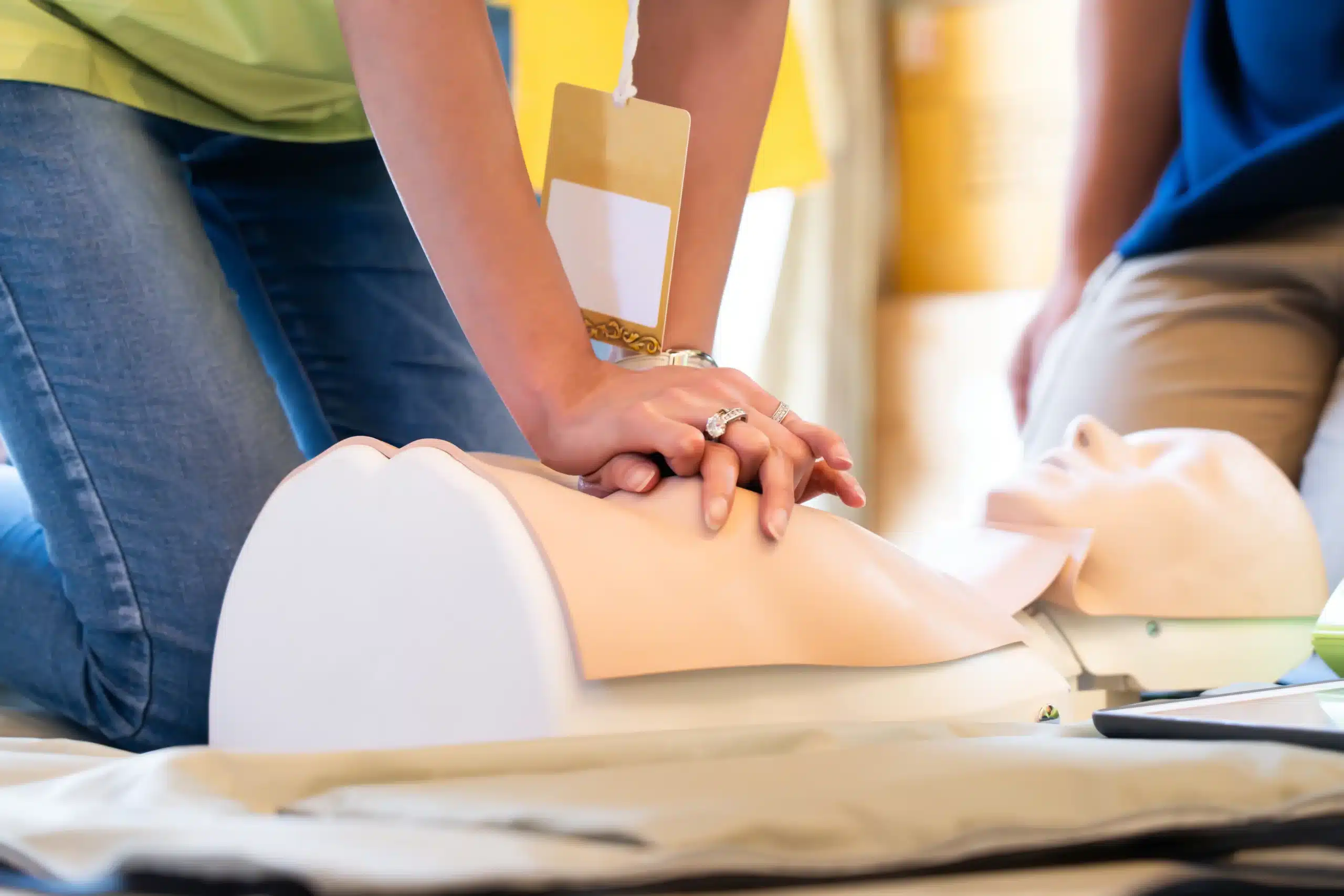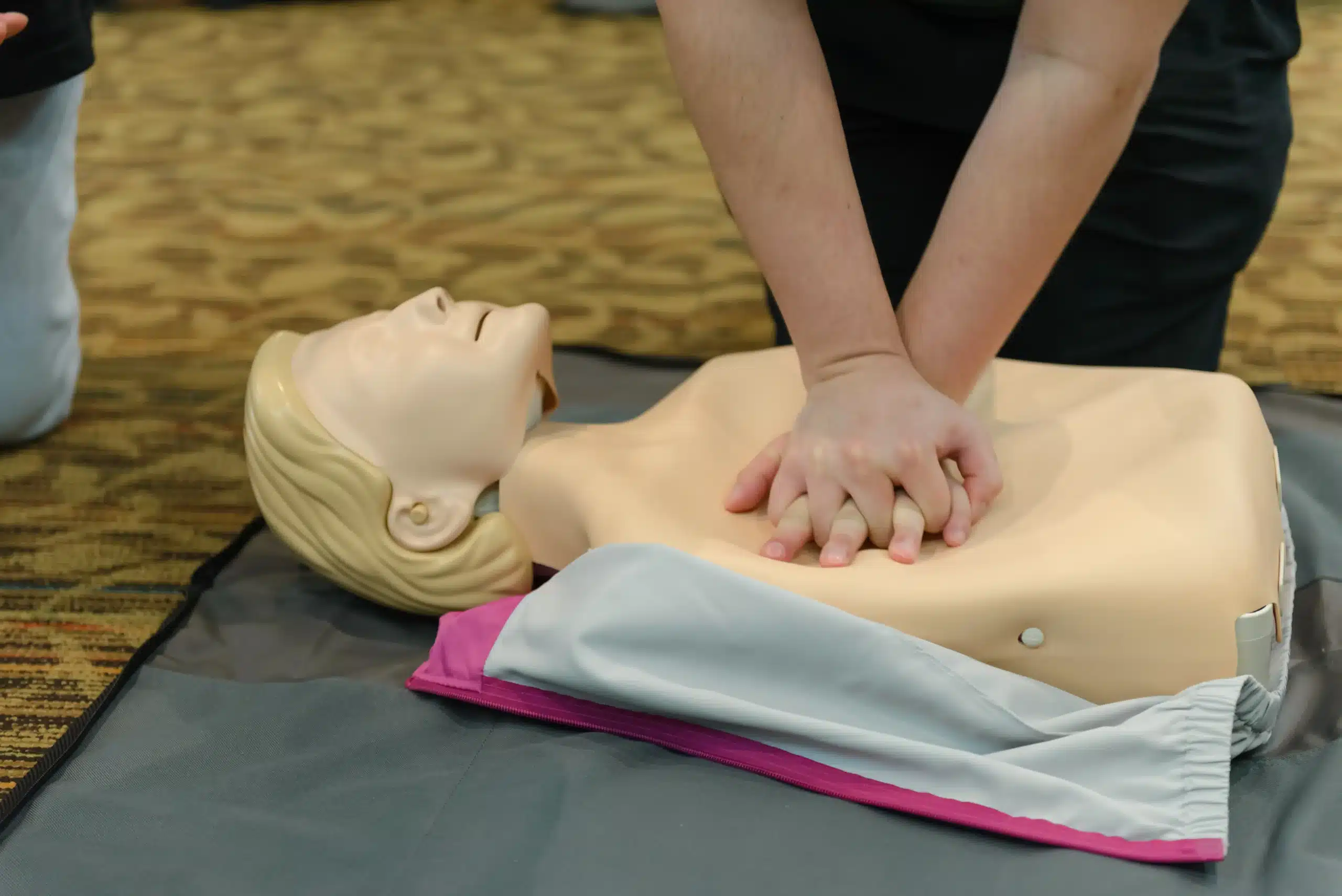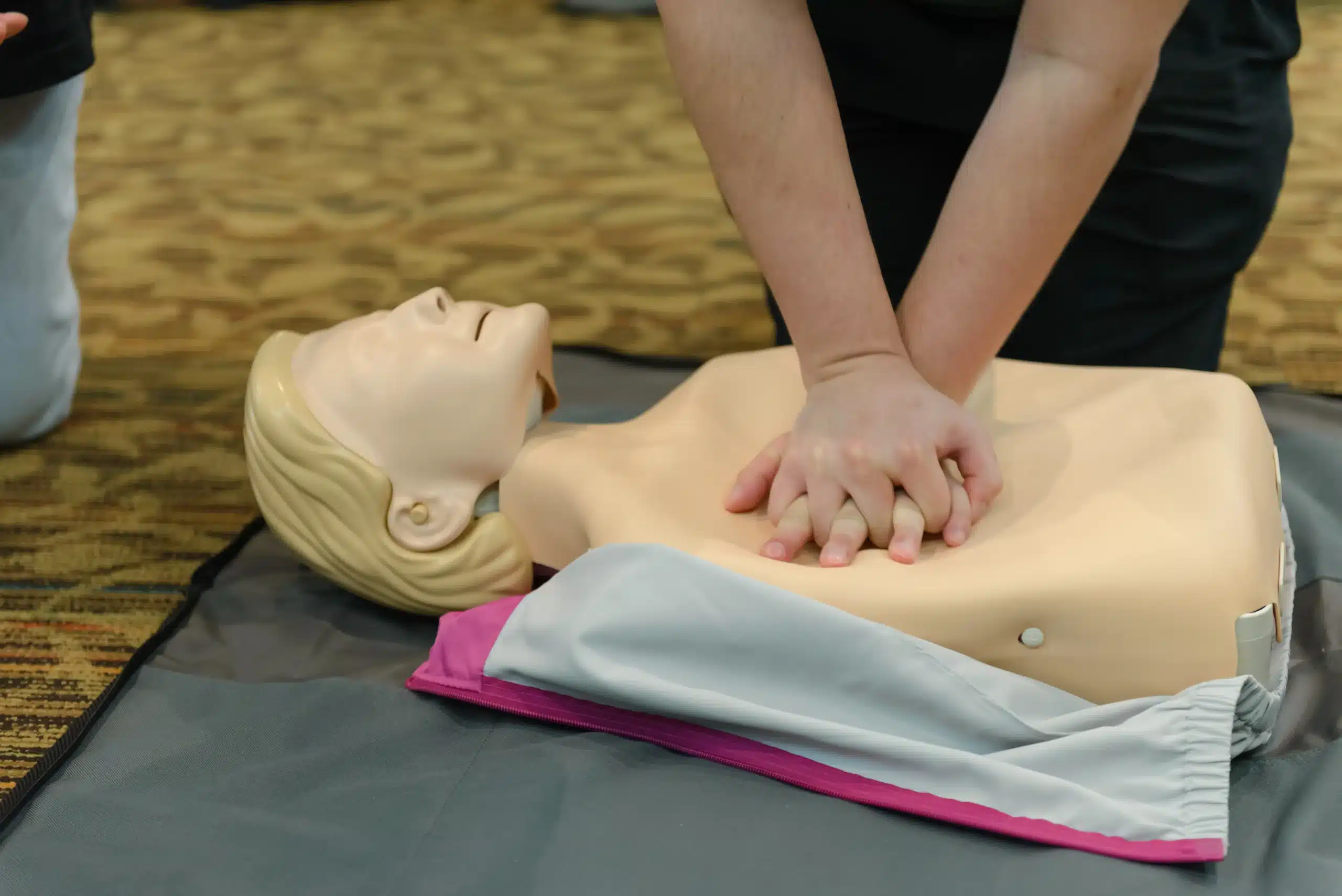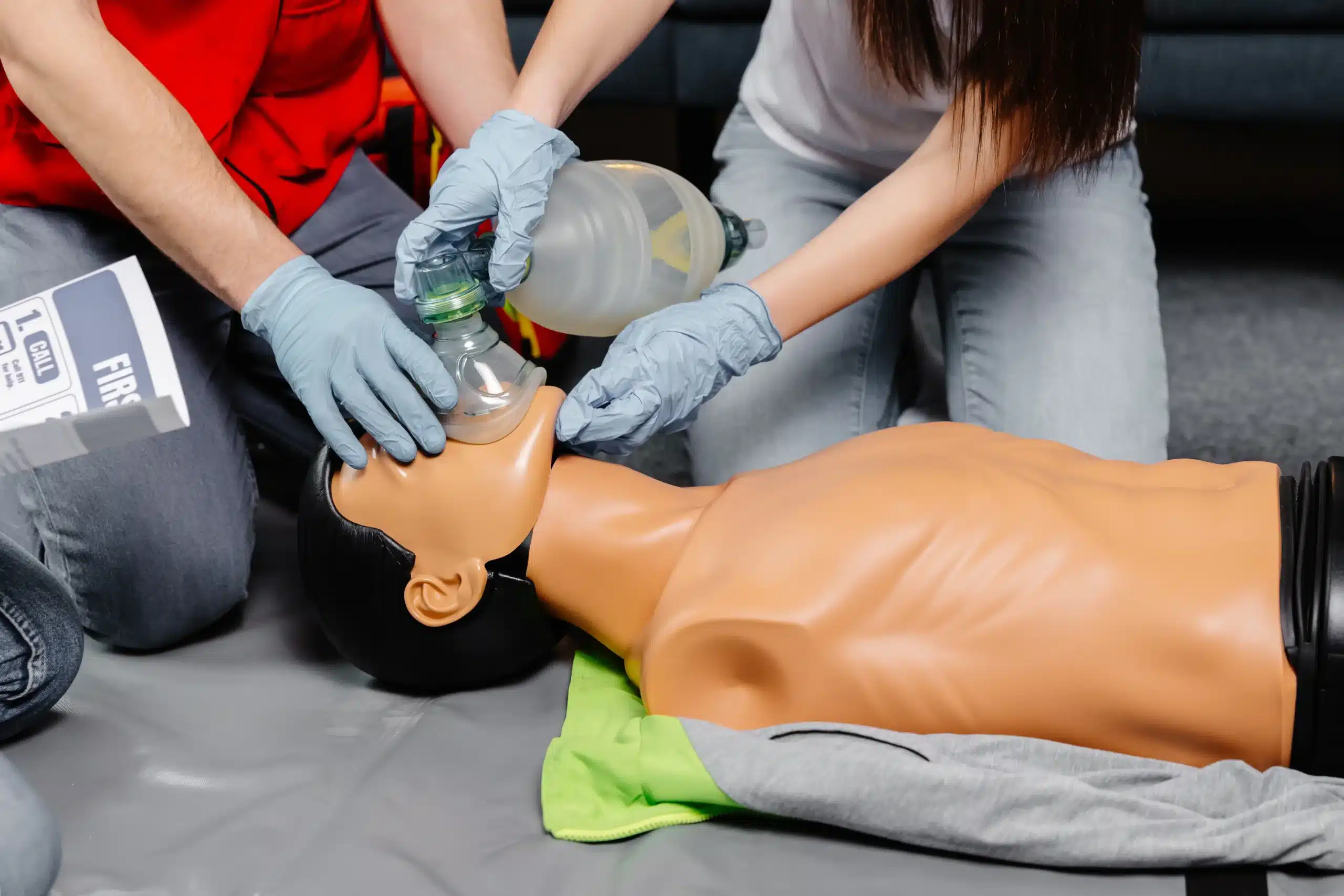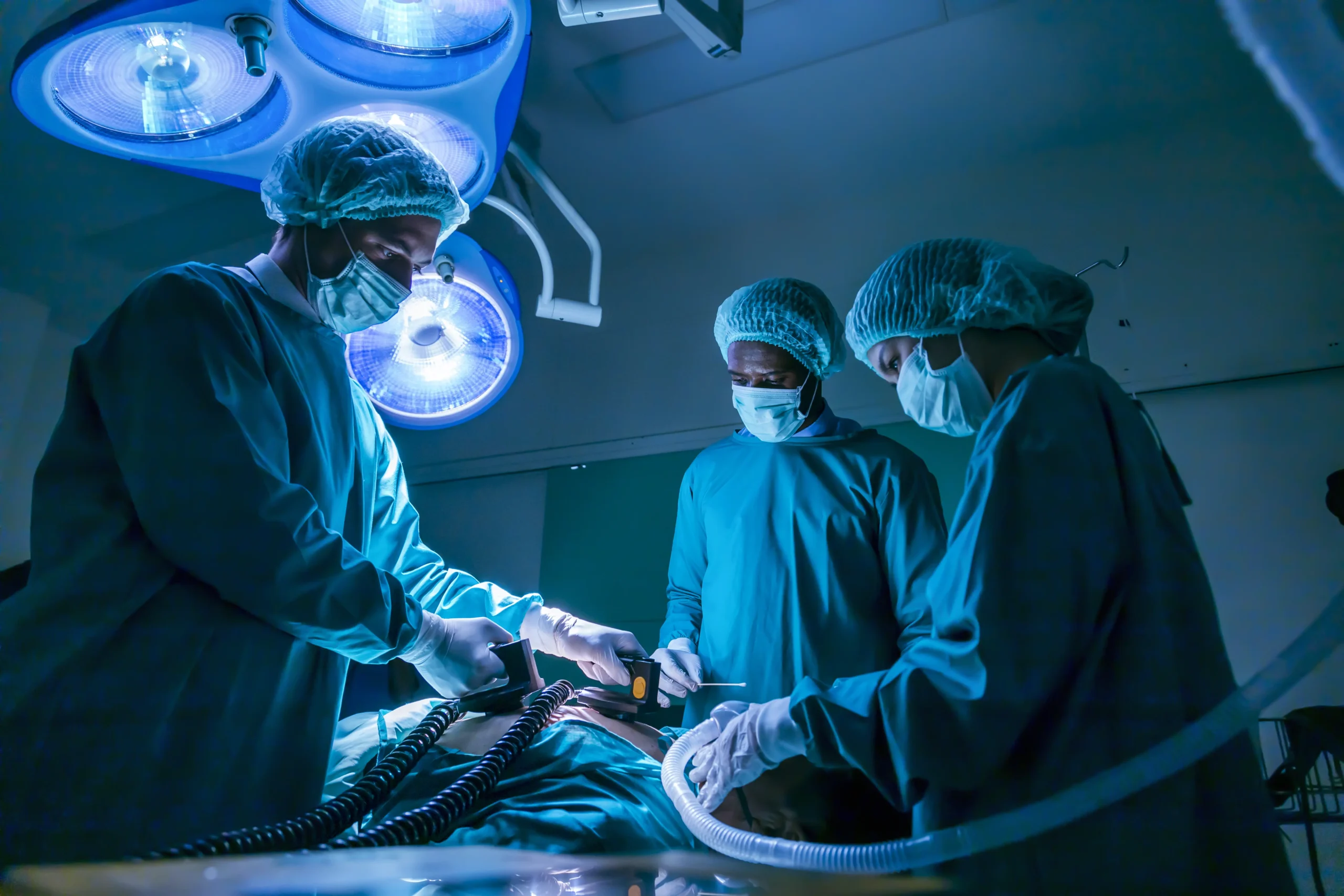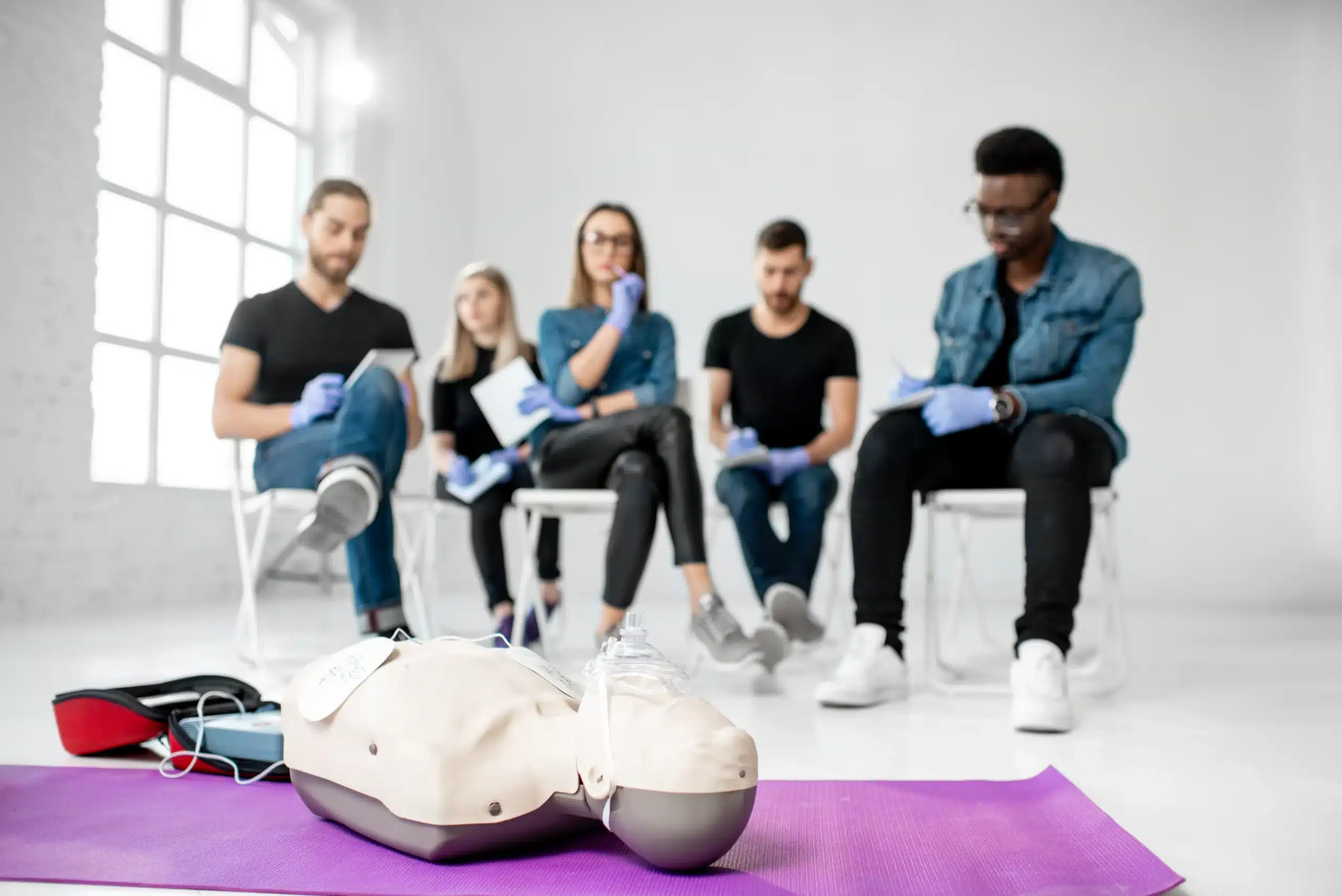In the bustling heart of San Francisco, where minutes can matter in a medical emergency, knowing basic life support (BLS) is more than just a good idea—it’s a vital skill. Whether you’re a healthcare professional, a concerned parent, or simply someone who wants to be prepared, this guide will walk you through the essentials of BLS certification in SF. We’ll cover everything from the core components of BLS training and how it differs from standard CPR to finding the right course format, understanding the costs involved, and discovering reputable training providers in San Francisco. We’ll also delve into maintaining your certification and discuss the broader impact of BLS skills within the San Francisco community.
Key Takeaways
- BLS is more than just CPR: It equips you with comprehensive skills, including AED use and airway management, to confidently handle a range of medical emergencies.
- Find a BLS course that fits your life: Consider your learning style and schedule when choosing between online, in-person, and blended learning options. Look for a reputable provider with experienced instructors and a convenient location.
- Stay certified and ready to respond: BLS certification requires renewal every two years. Stay up-to-date with the latest guidelines to maintain your skills and provide effective assistance in emergencies.
What is Basic Life Support (BLS)?
Basic Life Support (BLS) is a crucial set of emergency procedures used to help someone experiencing a life-threatening medical crisis, like cardiac arrest or respiratory failure. It’s about recognizing when someone needs immediate help and knowing the steps to take to increase their chances of survival. Think of it as the first line of defense in a medical emergency.
Key BLS Components
BLS training equips you with a range of skills that go beyond basic CPR. You’ll learn how to use an automated external defibrillator (AED), a portable device that can help restore a normal heart rhythm. Airway management is another key component, ensuring the person can breathe effectively. You’ll also learn techniques for assisting someone who is choking, a skill applicable in everyday situations. BLS courses cover rapid assessment, CPR/AED use for all ages, and how to handle obstructed airways. The training also emphasizes critical thinking, understanding how the emergency medical system works, and knowing relevant legal and safety precautions.
Who Needs BLS Certification?
While BLS certification is often associated with healthcare professionals like doctors and nurses, and first responders such as EMTs, firefighters, and police officers, these skills are valuable for everyone. Knowing BLS can empower you to respond effectively in a crisis, whether at home, at work, or in the community. Consider getting BLS certified if you work with children, are a fitness instructor, or simply want to be prepared for any emergency. Even if BLS certification isn’t required for your job, this knowledge can make a real difference.
BLS vs. CPR: What’s the Difference?
CPR (Cardiopulmonary Resuscitation) teaches basic life-saving skills like chest compressions and rescue breaths to use in cardiac arrest situations. It’s designed for anyone who wants to learn how to help in emergencies and meets many workplace safety requirements. BLS (Basic Life Support) is a more advanced certification. It includes everything in CPR and adds techniques for various medical emergencies like cardiac arrest, respiratory distress, and airway obstruction. Think of BLS as the next level, building on the foundational skills taught in CPR. The American Red Cross offers a helpful comparison of the two certifications.
When to Choose BLS over CPR
Choosing between BLS and CPR depends mainly on your career. Healthcare providers and first responders—such as doctors, nurses, EMTs, police, and firefighters—often need BLS certification. It provides comprehensive training to handle a broader range of medical emergencies in professional settings. If you’re a parent, teacher, or want basic life-saving skills for personal use or general workplace requirements, CPR training is a good fit. The Red Cross offers further guidance on choosing the right certification.
Workplace Certification Requirements
Healthcare professionals need to maintain a current BLS certification. BLS certification must be renewed every two years. Many hospitals accept online BLS certifications, which makes renewing easier. The BLS course offers four continuing education credits for first-time certification, a valuable addition to your professional development.
Where to Get BLS Certified in San Francisco
Finding the right BLS certification course in San Francisco depends on your learning style, schedule, and budget. Here are a few reputable options to explore:
Safety Training Seminars
Safety Training Seminars offers American Heart Association-certified BLS training in over 60 locations across Northern California, including San Francisco. This makes it easy to find a class that fits your schedule. They also offer a low price guarantee, ensuring you get the best value for your training. Check their course calendar for upcoming BLS classes in San Francisco. Safety Training Seminars serves the broader Bay Area, including Daly City, San Mateo, and Oakland. They also offer other certifications like ACLS and PALS.
American Red Cross
The American Red Cross provides BLS certification courses in San Francisco, with options for different learning styles. They offer blended learning (a combination of online coursework and in-person skills sessions) and fully online courses, providing flexibility for busy schedules. This allows you to tailor your learning experience to your needs.
Revive CPR
Revive CPR offers AHA-certified BLS training in San Francisco, focusing on hands-on, instructor-led learning. Their emphasis on practical training and real-life scenarios can help build confidence in your ability to respond to emergencies. This approach goes beyond simply using voice-assisted manikins, providing a more interactive and engaging learning experience.
American Heart Association
While the American Heart Association doesn’t directly conduct training courses, they set the standards for BLS certification. You can find AHA-certified courses through various training centers, including those listed above. Understanding the AHA’s role in BLS certification ensures you’re receiving training that meets nationally recognized standards.
BLS Course Formats and Durations in San Francisco
Finding the right BLS course often comes down to format and schedule. Luckily, there are several options available in San Francisco, so you can choose the learning style that best suits your needs.
In-Person Classes
In-person BLS classes offer hands-on training and direct feedback from certified instructors. This direct interaction is invaluable for mastering essential life-saving techniques. Safety Training Seminars offers various in-person courses, including BLS, ACLS, and PALS training, at their San Francisco location. These courses cater to both healthcare professionals and the general public. The in-person format allows for real-time clarification and practice, ensuring you feel confident in your skills.
Online Options
If your schedule is packed, online BLS certification courses offer a flexible alternative. These self-paced programs let you learn anytime, anywhere. Online learning is a popular choice for busy professionals. While online courses offer theoretical knowledge, they typically require a separate in-person skills session for hands-on practice and official certification. Research online BLS providers to find a reputable program.
Blended Learning
Blended learning combines online flexibility and in-person practice. You’ll complete the coursework online at your own pace, then attend a shorter in-person session to practice your skills. This efficient approach streamlines the learning process and ensures you’re well-prepared for real-world scenarios. Providers like Revive CPR offer blended learning options, allowing you to maximize your time and focus on practical application during the in-person portion.
Class Schedules and Flexibility
BLS training schedules in San Francisco are designed to accommodate busy lifestyles. Safety Training Seminars offers courses seven days a week, with various time slots available. This flexibility makes it easier to find a class that fits your schedule. Be sure to check with your chosen provider for their most up-to-date schedule.
BLS Certification Costs in San Francisco
Getting BLS certified is an investment in your skills and ability to respond to emergencies. Understanding the costs involved helps you plan and budget effectively. Here’s a breakdown of what you can expect in San Francisco:
Average Pricing
BLS certification costs in San Francisco vary based on the training provider, course format (online, in-person, or blended), and included materials. The rise of online BLS certification courses has made getting certified more accessible and often more affordable. Expect to find BLS certification courses ranging from around $70 to $100. Compare prices from different providers to find the best value.
Discounts and Promotions
Many training centers and organizations offer discounts and promotions on BLS certification courses. Look for special offers, particularly for students, healthcare professionals, or groups. Sometimes, registering early or during specific periods can also mean discounts. Safety Training Seminars frequently offers promotions on their CPR, BLS, ACLS, and PALS certification courses, making quality training accessible and affordable.
Group Rates and Special Offers
If you’re certifying a group, like coworkers or a community organization, ask about group discounts. Many providers offer reduced rates for group bookings, lowering the per-person cost. Some providers, like Revive CPR, offer substantial group discounts. This can be a smart way to get everyone trained efficiently and cost-effectively.
Safety Training Seminars’ Low Price Guarantee
Safety Training Seminars provides high-quality BLS training at competitive prices, backed by a low-price guarantee in San Francisco County. If you find a lower advertised price for a comparable BLS course, they’ll match it. This commitment to affordability makes them a solid choice for individuals and groups.
What Happens in a BLS Certification Course?
This section outlines what you can expect during a typical BLS certification course, from the curriculum and hands-on practice to the assessment process and instructor qualifications. Understanding these elements will help you feel prepared and confident going into your training.
Course Curriculum
BLS certification courses cover a range of life-saving techniques. You’ll learn adult, child, and infant CPR, how to use an automated external defibrillator (AED), and techniques for clearing obstructed airways. The curriculum also emphasizes developing problem-solving skills so you can effectively assess and respond to various emergency situations. For example, you’ll learn how to recognize the signs of a heart attack or stroke and provide appropriate care. This BLS course in San Francisco covers all of these essential components.
Hands-on Practice and Scenarios
BLS courses aren’t just about lectures and textbooks. A significant portion of your training involves hands-on practice and simulated scenarios. You’ll work with mannequins to practice CPR techniques, including chest compressions and rescue breaths, and become familiar with using an AED in a safe, controlled environment. These realistic scenarios help build muscle memory and confidence, allowing you to react effectively under pressure. The goal is to develop both the physical skills and the critical thinking abilities necessary to improve patient outcomes. Safety Training Seminars emphasizes this practical approach to ensure you’re fully prepared for real-world emergencies.
Assessment and Certification
To receive your BLS certification, you’ll need to demonstrate proficiency in the skills you’ve learned. This typically involves a written exam and a practical skills test where you perform CPR and other techniques on a mannequin. Upon successful completion, you’ll receive an official American Heart Association (AHA) certification card, valid for two years. This nationally recognized certification validates your skills and knowledge in BLS.
Instructor Qualifications
BLS courses are led by certified instructors who are experts in their field. These instructors undergo rigorous training and maintain current certifications to ensure they’re up-to-date on the latest AHA guidelines. They’re experienced in teaching BLS techniques and providing constructive feedback. Safety Training Seminars ensures all their instructors meet these high standards, providing students with a quality learning experience.
How to Choose the Right BLS Course in San Francisco
Finding the right BLS course can feel overwhelming with so many options in San Francisco. This section breaks down key factors to consider, questions to ask potential providers, and how to compare different courses. By the end, you’ll be prepared to make an informed decision that aligns with your needs and learning style.
Factors to Consider
Think about what matters most to you in a learning environment. Do you thrive in a traditional classroom or prefer the flexibility of online learning? Consider these factors when making your choice:
- Course Format: Classes come in different formats, including online and blended online/in-person options. This allows you to choose what best suits your learning style and schedule. If you value hands-on practice, an in-person class might be a better fit. If your schedule is packed, the flexibility of online learning could be more convenient.
- Location and Schedule: Choose a course location that is easy to get to and offered at times that work for you. Safety Training Seminars, for example, offers classes daily across over 60 offices in Northern California.
- Instructor Qualifications: Look for courses taught by certified instructors with plenty of experience. A knowledgeable and engaging instructor can make a big difference in your learning.
- Cost: BLS course fees can vary. Compare pricing and check for any discounts or promotions. Safety Training Seminars offers a low price guarantee, ensuring you get the best value.
Questions to Ask Providers
Before signing up for a BLS course, gather information by asking providers these key questions:
- Which Organizations Accept Your Certification? It’s important to ensure the certification will be recognized by employers and healthcare facilities. Ask if most hospitals accept their online BLS certifications.
- What is the Renewal Process? Understanding how and when to renew your BLS certification helps you maintain your credentials without any gaps.
- What is Included in the Course Fee? Clarify what materials the course fee covers, such as textbooks or pocket masks. This helps you avoid unexpected costs.
- What is the Class Size? Smaller classes often provide more personalized instruction and interaction with the instructor.
Comparing Courses
Once you’ve gathered information, compare your top choices. Consider these points:
- Accreditation: Ensure the course is accredited by a reputable organization like the American Heart Association (AHA). Safety Training Seminars and Revive CPR both offer AHA-certified courses in San Francisco.
- Course Content: Review the curriculum to ensure it covers all the essential BLS skills and knowledge.
- Student Reviews: Reading reviews from past students can give you valuable insights into the quality of instruction and the overall learning experience.
- Price and Value: Compare the total cost, including materials and the provider’s reputation. Safety Training Seminars offers a low price guarantee.
How to Maintain Your BLS Certification
Once you’re BLS certified, staying current is key. Knowing the latest life-saving techniques ensures you’re always prepared to help. Here’s what you need to know about maintaining your BLS certification:
Renewal Requirements
BLS certification is valid for two years. To maintain your credentials, you’ll need to recertify before it expires. This involves retaking the BLS course and passing the certification exam. Regular renewal keeps your skills sharp and ensures you’re up-to-date on any changes in guidelines. Think of it like a driver’s license—you need to renew it periodically to keep it valid.
Continuing Education
When you first become BLS certified, you’ll receive continuing education credits. These credits are valuable, especially for healthcare professionals, and demonstrate your commitment to ongoing learning. They can also contribute to fulfilling requirements for professional licenses and certifications.
Staying Updated on Guidelines
BLS guidelines can change periodically to reflect the latest scientific research and best practices. Staying informed about these updates is crucial for providing effective care. Review updated materials before your recertification test to avoid any surprises and ensure you’re prepared. Staying current with BLS guidelines benefits everyone—it allows you to confidently provide the best possible care in any emergency. Check with your certifying organization or training provider for the most recent guidelines.
The Impact of BLS Skills in San Francisco
Knowing BLS can make a real difference in San Francisco, impacting everything from local healthcare regulations to individual career paths. Let’s explore how:
Local Healthcare Regulations
Many healthcare roles in San Francisco, especially those involving direct patient care, require BLS certification. This isn’t just a formality; it reflects the city’s commitment to high standards of care. BLS certification demonstrates that healthcare providers can handle emergencies like cardiac arrest and respiratory distress, creating a safer healthcare environment. These regulations often align with national standards set by organizations like the American Heart Association, ensuring San Francisco’s healthcare system meets rigorous benchmarks.
Community Benefits
Beyond regulations, BLS skills benefit the entire San Francisco community. With BLS training, individuals can respond effectively to emergencies, providing crucial support until professional help arrives. This is especially important in a busy city where emergencies can happen anytime. Imagine someone collapsing in a park or a choking incident at a restaurant—BLS-trained individuals can step in and potentially save a life. This widespread BLS knowledge creates a more prepared community, ready to face unexpected medical situations. The Red Cross emphasizes practical training scenarios to prepare individuals for real-life emergencies, as detailed on their BLS Certification page.
Career Advancement
In San Francisco’s competitive job market, BLS certification offers a significant advantage. For healthcare professionals, it’s often a prerequisite and demonstrates professional development. Even outside healthcare, BLS skills enhance a resume, showing employers you can handle emergencies and prioritize safety. This can be valuable in fields like education, childcare, and fitness. BLS certification is typically valid for two years, and renewal courses are readily available to keep your skills and certification current. The Red Cross even offers instructor training, allowing certified individuals to share their expertise and train future BLS providers.
Common BLS Certification Questions in San Francisco
This section addresses some of the most frequently asked questions about BLS certification in San Francisco. We aim to provide clear and concise answers to help you make informed decisions about your training.
Certification Validity and Acceptance
One common question is how long a BLS certification remains valid. Typically, BLS certification is valid for two years. It’s essential to keep track of your certification’s expiration date and renew it promptly to maintain your credentials and comply with workplace requirements. Many healthcare employers require current certification, so staying up-to-date is crucial for career advancement. Another frequent question concerns the acceptance of online BLS certifications. While online courses offer convenience, it’s important to choose a program that meets American Heart Association guidelines and is accepted by your employer or licensing body. Safety Training Seminars offers courses that follow these guidelines, ensuring your certification is widely recognized.
Post-Course Support
Many students wonder about the support available after completing a BLS certification course. At Safety Training Seminars, we offer resources and guidance to help you maintain your skills and knowledge. We understand that questions may arise after you’ve completed your training, and we’re here to provide ongoing support. This commitment to post-course support sets us apart and ensures you feel confident in your abilities. The rise of online and blended learning has made BLS certification more accessible, allowing busy professionals to fit training into their schedules.
Accessibility and Scheduling
Finding a BLS course that fits your schedule is a top priority for many San Francisco residents. With the city’s bustling pace, convenient scheduling is key. Safety Training Seminars offers BLS courses daily across over 60 locations in Northern California, making it easier to find a class that works for you. We understand the challenges of busy schedules and strive to provide flexible options, including weekend and evening classes. Our San Francisco location serves not only the city itself but also surrounding areas like Daly City, San Mateo, and Oakland, expanding access to high-quality BLS training.
Related Articles
- BLS CPR Classes in San Francisco (Bayshore)
- CPR Classes in San Francisco: A Complete Guide – San Francisco CPR Classes
- BLS, ACLS, PALS, CPR & First-aid Classes in San Francisco, CA
- Low-Cost CPR Training in Northern California: A Guide – San Francisco CPR Classes
- ACLS Courses San Francisco: Your Comprehensive Guide – San Francisco CPR Classes
Frequently Asked Questions
Is BLS certification the same as CPR certification? CPR training focuses on essential life-saving techniques like chest compressions and rescue breaths, while BLS certification builds upon those skills, adding training on AED use, airway management, and other emergency procedures. BLS certification is generally more comprehensive than CPR certification.
How much does BLS certification cost in San Francisco? BLS certification costs in San Francisco typically range from $70 to $100, depending on the training provider, course format (in-person, online, or blended), and included materials. Check with specific providers like Safety Training Seminars for their pricing and any available discounts.
How long is a BLS certification valid, and how do I renew it? BLS certification is usually valid for two years. To renew, you’ll need to retake the BLS course and pass the certification exam before your current certification expires. This ensures your skills and knowledge are up-to-date.
What if I have questions after completing my BLS course? Reputable training providers like Safety Training Seminars offer post-course support to answer your questions and provide guidance. Don’t hesitate to reach out to your provider for clarification or assistance after completing your training.
What are the different BLS course formats available in San Francisco? You can find BLS courses in several formats: in-person classes, online courses, and blended learning (a combination of online coursework and in-person skills sessions). Choose the format that best suits your learning style and schedule.


